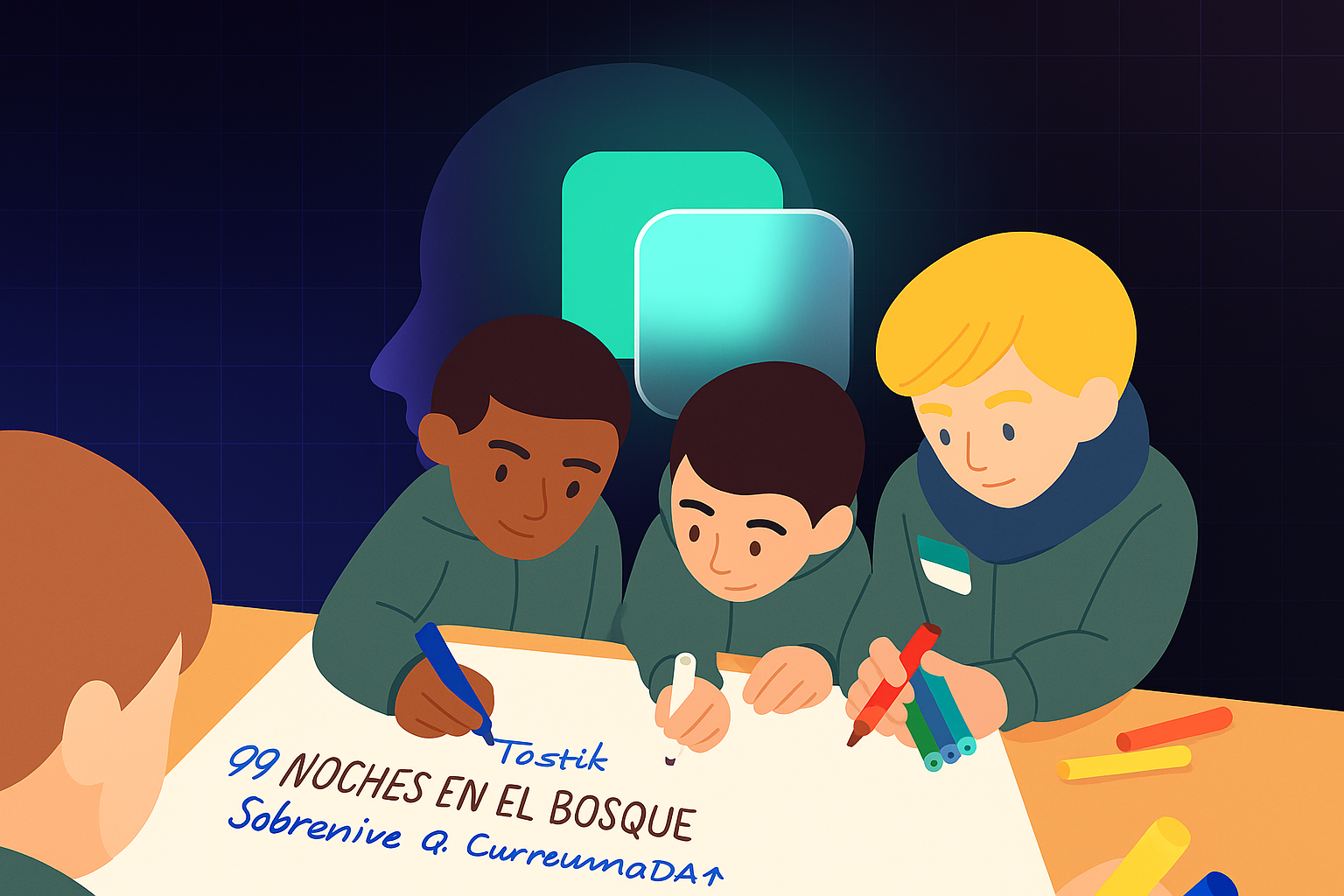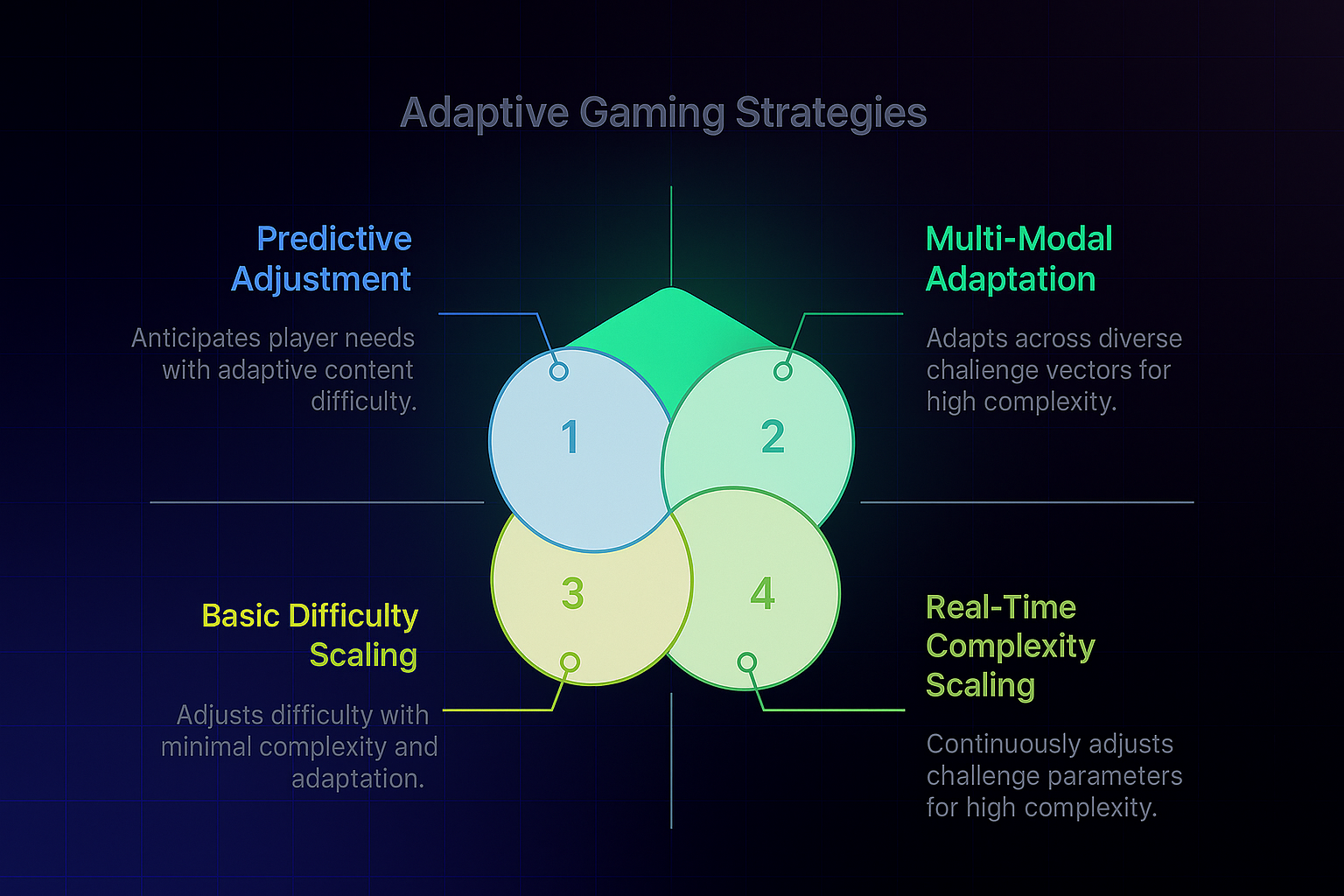Join our newsletter



Traditional video games follow static difficulty curves, but children develop at vastly different paces. AI-driven game design represents a paradigm shift toward personalized gaming experiences that adapt in real-time to each child's cognitive development, emotional state, and skill progression.
This approach transforms games from entertainment into powerful educational tools that foster learning while maintaining the joy that makes gaming compelling for young minds.
| AI Technique | Primary Use Case | Age Suitability | Implementation Complexity | Privacy Level |
|---|---|---|---|---|
| Behavioral Analytics | Gameplay pattern recognition | 6-18 years | Medium | Moderate |
| Computer Vision | Emotion/attention detection | 8-16 years | High | High |
| Natural Language Processing | Dialogue adaptation | 10-18 years | Medium-High | Low |
| Reinforcement Learning | Dynamic difficulty adjustment | 6-18 years | High | Low |
| Collaborative Filtering | Content recommendation | 12-18 years | Medium | Medium |
Modern AI-driven games employ sophisticated systems that continuously analyze multiple data streams:
Machine learning algorithms track gameplay patterns, decision-making speed, and error rates using Hidden Markov Models and neural networks to build comprehensive player profiles.
Advanced systems incorporate heart rate variability and eye tracking to gauge emotional engagement and cognitive load, identifying when children are frustrated, bored, or in optimal learning states.
AI systems map individual learning curves, identifying patterns in skill acquisition and enabling predictive modeling of future learning needs.
AI algorithms continuously adjust challenge parameters, including puzzle complexity, time pressure, and cognitive load, maintaining flow state while preventing frustration.
Rather than simply making games easier or harder, sophisticated systems adapt across different challenge vectors - visual cues for spatial reasoning struggles, complex narratives for logic-excelling players.
Machine learning models anticipate player needs, pre-adjusting content difficulty based on learned patterns.

Character Development Mirroring: AI characters evolve alongside players, reflecting their growth in maturity and problem-solving ability. Companion characters start with simple dialogue and gradually develop complex personality traits.
Thematic Adaptation: Natural language processing analyzes player responses to dynamically adjust story themes - science-interested children encounter technology adventures, while socially-inclined players face relationship challenges.
Emotional Resonance Optimization: Sentiment analysis helps AI systems craft emotionally appropriate content, learning which stories and resolutions resonate with individual players.
Language Complexity Scaling: Natural language generation adjusts vocabulary and sentence structure to match linguistic development, creating communication challenges that grow with abilities.
Socratic Questioning: AI characters employ pedagogical dialogue techniques, asking thought-provoking questions that encourage critical thinking while identifying when to provide answers versus guide discovery.
As education researcher Dr. Carol Dweck notes, "The view you adopt for yourself profoundly affects the way you lead your life." AI-driven games foster growth mindset through personalized challenges.
| Cognitive Skill | Age Range | AI Adaptation Methods | Measurable Outcomes |
|---|---|---|---|
| Working Memory | 6-12 years | Progressive information load, visual/audio cues | Memory span tests, task switching |
| Problem Solving | 8-16 years | Scaffolded hint systems, multiple solution paths | Time to solution, strategy diversity |
| Executive Function | 6-14 years | Distraction management, impulse control games | Sustained attention improvements |
| Spatial Reasoning | 7-15 years | 3D manipulation tasks, perspective challenges | Mental rotation scores |
| Language Processing | 5-18 years | Vocabulary complexity scaling | Reading comprehension gains |
Research from MIT's Center for Digital Business shows adaptive learning systems improve outcomes by 30-70% compared to traditional methods.
Empathy Development: AI characters model appropriate emotional responses and provide perspective-taking opportunities, adapting scenarios to target specific social-emotional objectives.
Collaboration Skills: Multiplayer AI-mediated experiences facilitate cooperation and conflict resolution, with AI analyzing group dynamics to support positive interactions.
Emotional Regulation Support: Systems monitor emotional states and provide interventions - suggesting breaks, offering calming activities, or providing coping strategies.
DragonBox transitions players from visual representations to abstract algebraic symbols, adapting pace based on comprehension patterns. Results: 93% success rate, 40% faster learning, 85% retention after 6 months.
As founder Jean-Baptiste Huynh explains: "We don't teach math; we let children discover it naturally through play, with AI ensuring they're always in their optimal learning zone."
| Feature | Traditional Approach | Duolingo's AI Adaptation |
|---|---|---|
| Lesson Difficulty | Fixed progression | Dynamic based on error patterns |
| Review Frequency | Scheduled intervals | Spaced repetition algorithm |
| Content Selection | Linear curriculum | Personalized based on weaknesses |
Research shows 34 hours of Duolingo equals one university semester.
Impact: 35 million students across 115 countries, 87% improved engagement, 40% greater problem-solving gains versus traditional methods.
As privacy expert Dr. Shoshana Zuboff warns: "We thought we were searching Google, but Google was searching us." This is critical for children's applications.
| Challenge | AI-Enhanced Solution |
|---|---|
| Data Collection | Federated learning with local processing |
| Parental Consent | Granular, ongoing consent management |
| Data Retention | Adaptive deletion based on learning completion |
| Transparency | Real-time data usage dashboards |
Healthy Gaming Metrics: Success measured by learning outcomes and well-being, not just engagement time.
Natural Stopping Points: Systems include conclusion points and encourage breaks, physical activity, and offline pursuits.
Computer Vision: Facial expression and posture analysis for deeper emotional insights
Voice Analysis: Speech pattern processing revealing engagement dimensions
Environmental Context: Adaptation for different physical settings
Teacher Integration: Rich analytics for educators about student progress
Peer Learning: Optimal groupings for collaborative learning
Continuous Assessment: Game-integrated evaluation without interrupting flow
As AI pioneer Yoshua Bengio emphasizes: "AI should augment human intelligence, not replace it, especially in education where the human connection remains irreplaceable."
| Development Phase | Timeline | Key Milestones |
|---|---|---|
| Research & Prototyping | 6-12 months | AI model validation, child testing |
| Alpha Development | 12-18 months | Core adaptive systems, privacy framework |
| Beta Testing | 6-9 months | Multi-school pilots, parent feedback |
| Commercial Release | 3-6 months | Platform optimization, teacher training |
The goal is not to replace human connection but to augment educational experiences. By combining technical development with child development understanding, we can create gaming experiences that provide exactly the right challenge at the right moment to support optimal learning and development.
The future of children's gaming is about creating intelligent systems that understand each child as an individual, providing personalized pathways for growth, discovery, and joy in learning.